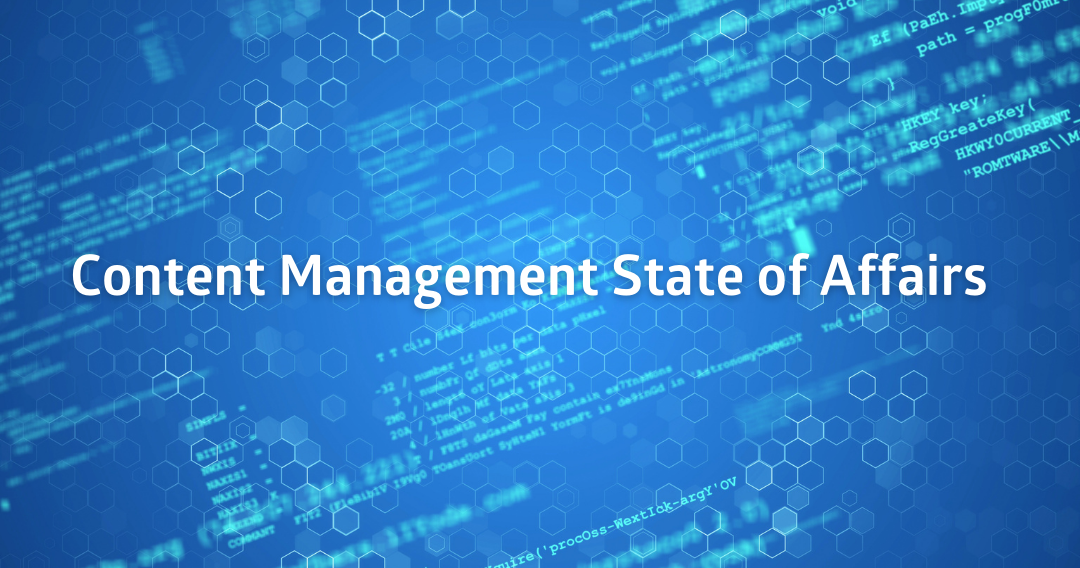8 Important Developments in the Enterprise Content Management Market
Enterprise content management is undergoing significant transformation. Several emerging trends are empowering organizations to boost operational efficiency and drive down costs. To fully leverage these opportunities, it’s essential to identify and understand these developments. Here are some of the most impactful trends shaping the sector.
1. Content Chaos
The volume of unstructured content within organizations has increased rapidly over the past several years, reaching a point where it now significantly impacts business continuity and creates direct economic challenges. Organizational leaders are increasingly recognizing that managing unstructured content is both inefficient and chaotic.
For example, file shares and email archives result in costs and potentially severe risks for those they are designed to help. Because of this, gaining control of unstructured content is becoming more important and is moving up the agenda of many IT and information managers. To effectively address content chaos, organizations must first gain insight into the volume of existing content, while also considering potential future growth, associated risks, and the overall quality of information.
2. Content Service Bus
The adoption of a content service bus has become a leading trend among enterprise content managers. Increasingly, large organizations are choosing to maintain diverse content solutions—sometimes due to legacy constraints, but more often for practical considerations. Each application addresses specific departmental needs and serves a distinct purpose. The concept of consolidating all content-related processes within a single enterprise content management system is now considered outdated. Instead, organizations seeking unified connectivity and comprehensive records management can achieve this by deploying a content service bus, which seamlessly integrates all content repositories and records management platforms.
3. Unified Content View
Content is created in different applications, with different metadata, but still a unified view on all content is desired; for example, via search or a dashboard that shows the quality of the content. Uniformity is essential. Integrating all content applications achieves uniformity by recognizing duplicate versions of documents and metadata enrichment.
4. Cloud
The cloud alone is not much of a trend anymore; it has become standard technology, but the cloud is now taken seriously by those in the ECM market. We are seeing a large movement of on premise solutions to their cloud counterparts, like from SharePoint on premise to SharePoint online (Office 365). Additionally, other providers are making the move towards the cloud, and cloud services for collaboration, sync, and share are being used increasingly in enterprise ECM architectures. One explanation for this trend may be that there is less resistance by IT leaders toward cloud applications, and they are increasingly trusting in the security of these solutions. The costs and benefits of the cloud are becoming clearer.
5. Phasing Out File Shares
Using file shares to work together with content within organizations is still very popular. Yet we see that more and more organizations are saying goodbye to their file shares and replacing them with different systems. Not surprisingly, because sticking to the use of the file share for storage of files has many disadvantages, such as having multiple versions in circulation, accidentally removing documents, and not having a clear process as to whether the organization complies with legislation and regulations regarding the storage of sensitive documents.
To remove an organization’s dependence on file share, several steps need to be taken. The first step is analyzing the current file shares to gain a better understanding of what data can be safely removed, how the file share is used, and what is relevant for a possible migration to a replacement system.
6. File Sync and Share
In addition to the file shares, there is an increase in the use of file sync and share solutions. The main reason is that these platforms, such as Box and Evernote, have improved their content management functionalities and have become enterprise-worthy solutions. The integration of these solutions in content lifecycle solutions, process supporting applications and archives makes them indispensable in the content application architecture.
7. Content Analytics
The functionality of content analytics solutions is becoming more intelligent, faster and more mainstream. Automatic classification of documents can be used for the benefit of metadata tagging and search. Patterns and trends that are hidden in the content can be recognized and are used to acquire new valuable insights and improve processes. Sensitive content can be detected and can automatically trigger a working process to avoid risks.
8. Content in context
Imagine this: you are working on a new product, managing a case, or completing a project in the appropriate supporting system—and, at every step, the right content is delivered exactly when and where you need it. This is made possible through analytics, content auto-classification, self-learning technologies, source integration, and detailed user profiling. The ultimate objective: to become an intelligent organization, where every piece of content is strategically deployed to optimize business processes.
Ready to transform the way your organization manages and leverages content? Get in touch with Xillio today to discover how our solutions can support your digital transformation journey.
Share this
You May Also Like
These Related Stories

Content Management State of Affairs

The newest movement in information management

No Comments Yet
Let us know what you think